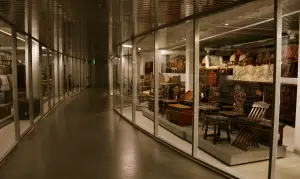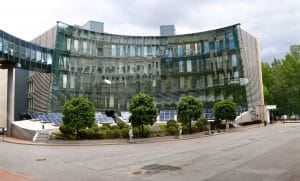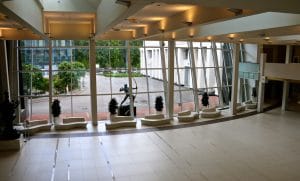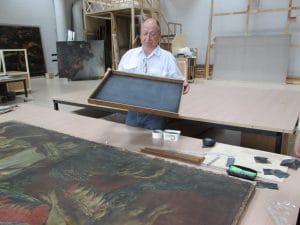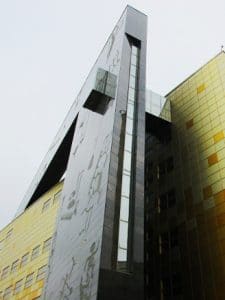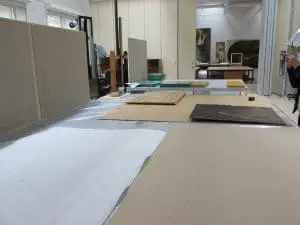Tucked neatly away within Staraya Derevnya just outside the centre of Petersburg sits the Restoration and Storage Centre of the State Hermitage. While it may be only a short metro ride from the bustling Nevsky Prospekt, the Hermitage Storage Building itself is quiet and spacious, entirely free of the crowds that make the main Hermitage overwhelming. Its more peaceful air is due in part to its location outside of the town’s centre, but mainly comes from the Storage Centre only recently being opened for tours. It’s a new-found treasure.
A Tour of the Storage Area with SRAS
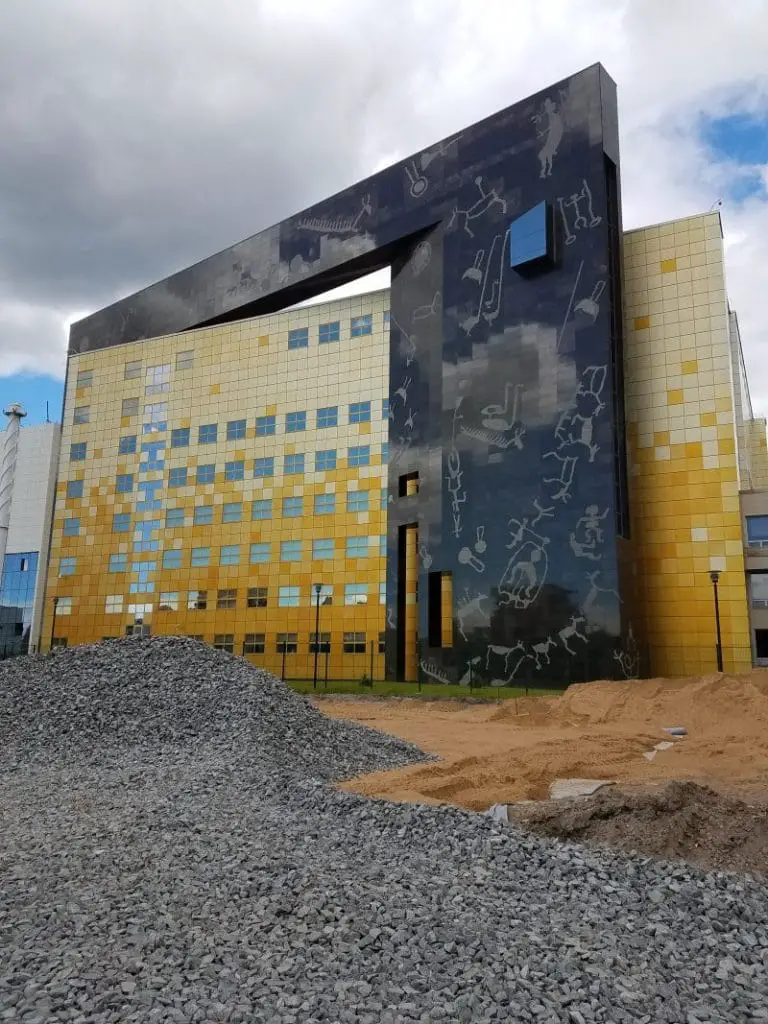
As part of our The Art and Museums in Russia program with SRAS, we recently took a tour of the Hermitage Restoration and Storage Centre’s storage facilities.
All visitor tours are done pre-scheduled and with a guide; no self-guided or audio tours are an option in this building. A space on a tour generally runs about 500 rubles, higher than some of the other Hermitage complex tickets. However, admission is free on the first Thursday of every month, and a tour is a part of the SRAS museums program. The employees in charge of leading tours are well-informed and well-rounded even in areas where they do not specialize and do make fun companions, so everyone being mandatorily accompanied is hardly a drawback.
Inside the storage centre, photographs of the art are forbidden, but even without taking home a picture, the exhibits are hard to forget. As its name would suggest, the Storage Centre contains all of the art pieces which the Hermitage owns but does not currently have out on display. It also houses everything the Hermitage owns but doesn’t display, such as Russian art from almost any given century after the 14th, large and complex furniture not originally housed in the Winter Palace, and carriages of the tsars. While the Hermitage Winter Palace complex is focused on European art and the collection of the tsars through the 1700s onward, the Hermitage Restoration and Storage Centre contains a sampling of everything else that the largest and best-funded museum in Russia could possibly grab throughout its history. Since the selection is so vast, tours can offer general overviews of the enormous collection as well as the ability to stop by art that interests the tour group, be it specific eras (modern, tsarist, archaeological), mediums (paintings, furniture, tapestries), or subjects (iconography, realism, historical, etc.). These can be decided when calling to arrange the tour or during its duration if something catches a visitor’s eyes.
These tours are not typical museum tours. While Hermitage Restoration and Storage Centre tours tend to move quickly as security does not encourage dallying for too long in one room, the tours are very easily customized and art is far less removed from the viewer, the experience seems more personal. For example, the storage room for icons contains 13th century frescoes uncovered in the city of Pskov’. Done in the traditional northern style, they are stored at eye level and where workers can easily access them. Most frescoes are displayed far above the usual line of sight in their original locations, or held back behind glass. The experience at the Storage Building is extremely intimate with the art and encourages an entirely different kind of interaction. While the Winter Palace Hermitage dazzles visitors with gilded lines and fabulous paintings, inspiring awe as to the breadth of its collection and the glamour of the tsars, the Storage Complex offers a familiar view, the scene of priceless art contained within a workplace, inspiring the idea of art as something living that must be interacted with on a human level.
Fine art is commonly and rightfully elevated above the everyday. The grandiosity of museum architecture reminds people that they are viewing the works of masters and the works on display are part of a great cultural heritage. While this view is deserved and accurate, it does make art seem entirely unapproachable to the layperson, something that exists but, once the painter or sculptor is finished, it remains held lofty on a museum wall somewhere to be untouched and never removed from its frame or otherwise interacted with outside of being looked at. Seeing art from the perspective of a storage area reminds us that art is very much alive. Art needs to be maintained, art needs to be worked with, even the classic paintings have people working behind them. The storage building humanizes the museum process, offering a fascinating glimpse behind the outer gilding of the Hermitage and reminding visitors that there is more to art and more to museums than admiring a piece in a golden frame.
The Hermitage Restoration and Storage Centre’s collection is much more vast in scope than the Hermitage would generally find itself displaying. It contains architecture that would not belong in the Hermitage’s rooms, and paintings by Russians that do not fall in the Hermitage’s European-only galleries. As such, the complex commonly lends its works out to other museums in Petersburg should they have a special event where the work fits in or is necessary. In this way, the Hermitage Restoration and Storage Centre functions somewhat more like an accessible collection for many of the Petersburg museums, despite all contents being owned by the Hermitage alone.
It makes for an eclectic mix. The museum complex holds a dash of everything, from a piece of contemporary Muscovite art to Peter the Great’s undershirts. It’s a unique experience and a worthwhile one, with something for everyone and often something interesting hiding behind the next industrial corner.
Kimberly Gordy
The Science of the Hermitage Restoration and Storage Centre
As part of Art and Museums in Russia, a summer program I am attending from SRAS, I recently attended a fascinating lecture on painting restoration methods at the Hermitage Museum’s restoration laboratory.
The laboratory is housed in the Hermitage Restoration and Storage Centre complex in Staraya Derevnja, on the north side of St. Petersburg. Though the stored artifacts are available to the public for viewing, the laboratory is not, which made a lecture on painting restoration from staff member Alexei Nicholski a thrilling opportunity. To our small group of students, Mr. Nicholski explained the methods and work behind the scenes at the world-renowned Hermitage.
Restorers are educated academically as visual artists, so although many of the resources they use for their work are technological or scientific, they also have a real understanding of and appreciation for the beauty of the pieces they help to preserve for the future. Onsite, the restorers have access to a photography lab, a chemistry lab, a vacuum table used to handle brittle, older canvases, and industrial microscopes. X-ray and infrared equipment, also used in restoration, are housed in the main Hermitage buildings in the center of the city.
While awaiting restoration, paintings are kept preserved, rolled in huge metal tubes. Due to the emergency evacuation of the Hermitage collections during the siege of World War II, at one point there were four or five paintings per tube, and for years afterward the tubes changed hands so many times that no one even knew which paintings were inside which tubes. Now, all the paintings are accounted for, and each painting is preserved in its own separate tube until the staff is ready to work on it.
Microscopes are used to examine each painting and determine what changes were caused by prior restoration, and what errors have been made in prior attempts to correct damage to the painting. Every step of restoration is painstakingly documented, much like the chain of evidence a forensic specialist is accountable for when writing a report.
If the canvas itself is brittle, which is often the case with 17th century paintings–canvas of that time period had little or no elasticity–the vacuum table allows the staff to remove the painting from the weak canvas onto a new, stronger and more flexible one. This “doubling” technique is only possible with works up to a certain size, as anything larger simply won’t fit onto the surface of the table for the transfer.
When restoring a painting, the Hermitage Restoration and Storage Centre staff never begins with complex errors or anything in the center of painting–they always begin at the edges and with simple errors. Then, working in ten centimeter square sections, they work their way in, allowing the problems with the middle of the painting to gradually and easily melt away in the process.
Restorers use a special varnish-based (not oil-based) paint, with very thin pigment to make retouches undetectable. The first step, once the painting is on a fortified canvas, is to restore the transparency of the varnish. The preferred method, developed in the 19th century, uses a special coffer, which consists of a box lined with a layer of flannel soaked in mineral spirits. A restorer places the coffer over the canvas for two to three minutes per section of the painting. The paint softens and reacts, actually reverting to its original state. However, since this process interacts with the top layer of paint, it’s very easy to completely ruin a painting if the work isn’t done just right! Restorers can make some corrections by careful use of an iron to straighten or “erase” seams, but that also comes with the risk of the iron sticking to the paint if it isn’t done correctly.
Restoration facilities are kept under thirty degrees Celsius at all times, and the ideal temperature is eighteen degrees (64.4F). The staff, however, prefers nineteen (66.2F), which is close enough to keep the paintings in excellent condition. This temperature prevents bubbling in the fresh varnish.
For adhesion, the Hermitage Restoration and Storage Centre uses sturgeon glue (made from dried sturgeon bladders), which has a very strong bond. European and American museums prefer rabbit glue (made from rabbit skin) because of its softer bonding. To diminish the strength of the sturgeon glue, Russian restorers dilute it with water or honey (it is thus all-natural and technically edible, if not appetizing!) This allows for variable concentrations, which is one of the reasons it is preferred by Russian museums. A 3% solution of glue with water is used for smaller repairs, and a 12% solution is used for doubling works onto new canvas, particularly in the case of large paintings.
Although other museums in other countries use synthetic compounds for both adhesive and varnish, Russian restorers feel that the organic materials they have used for over the past 200 years have stood the test of time. They are hesitant to change to synthetics which have not yet proven to last for centuries.
In studying archaeological curation in America, I have come across a similar debate about the synthetic replacement of India ink–which is still clearly legible after over a hundred years–in labeling artifacts. We can’t be certain that any synthetic can do the same until over a century has passed, and by then, obviously, it will be too late for us to do anything about it.
Synthetic varnish is especially out of favor in Russia. Compared to organic varnish, it’s much more difficult to remove, and loses its transparency over time. However, with large-scale works, it is sometimes necessary to use synthetics in spite of these drawbacks, because the organic materials are heavier, adding more weight to an already unwieldy painting. Large works are difficult to transport as it is–a large painting has to be put back into a tube to be moved, then has to be re-stretched for display. Another difference in the treatment for large paintings, since the coffer is impractical on such a huge scale, is the use of a brush wash of isopropic alcohol to restore the softness of the paint. Mr. Nicholski, who is himself a painter, advises his artist friends, “Paint small paintings, or they won’t get displayed!”
This fascinating and entertaining lecture, held in unique environs, I felt dovetailed with my previous education and curation interests very well. I’m sure that the knowledge I’ve gained and am gaining in St. Petersburg will be very useful in my future career.
Sara Durell
All Articles About the Hermitage on MuseumStudiesAbroad.org
(includes the current article)
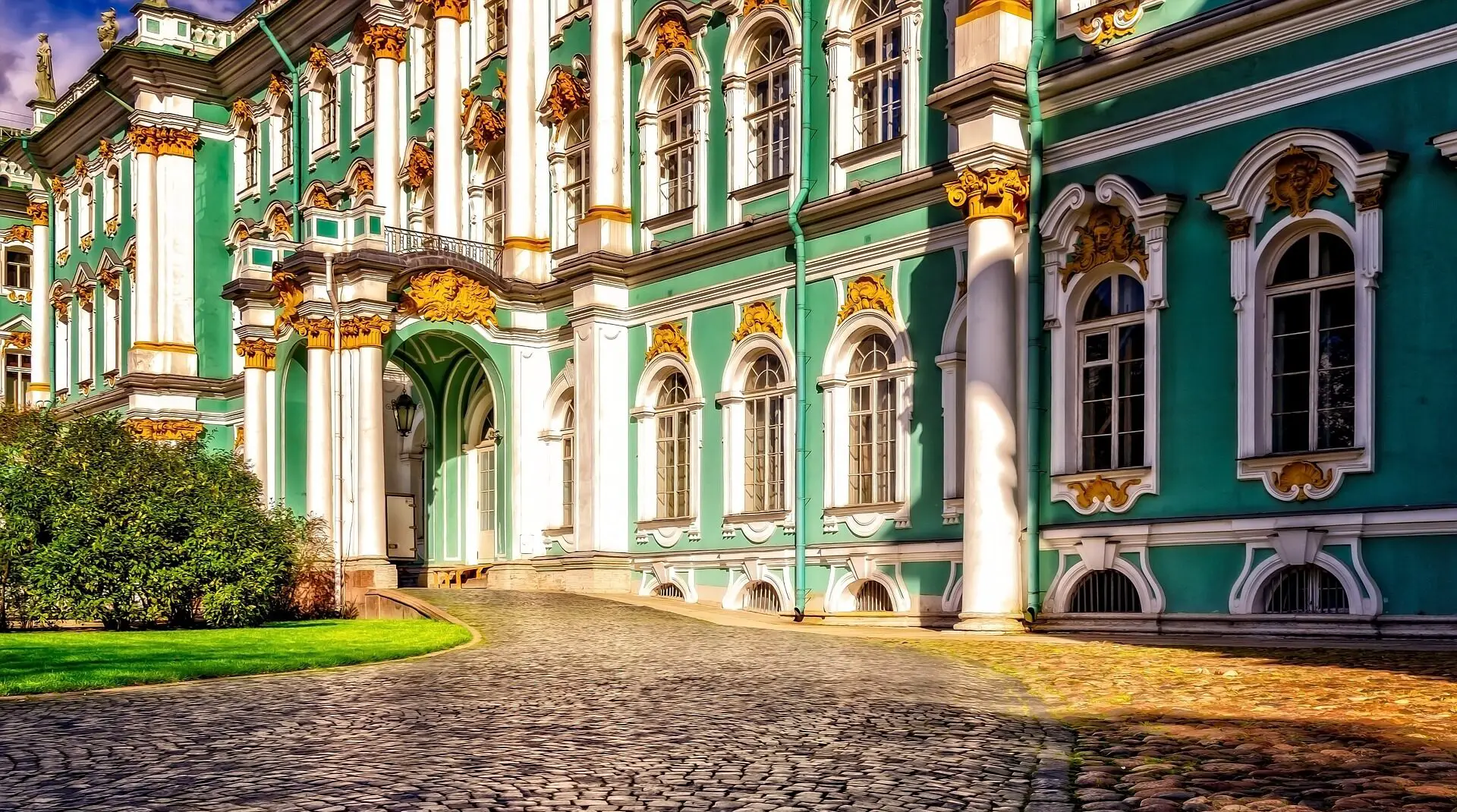
The Hermitage State Museum: Exploring Art and History
The following provides a short history of The Winter Palace building and The State Hermitage Museum as well as details the museum’s current programs and world-wide activities today. It also provides reviews of self exploration and guided tours of the Hermitage. Hermitage tours are included with most St. Petersburg SRAS Programs and Moscow SRAS programs. […]
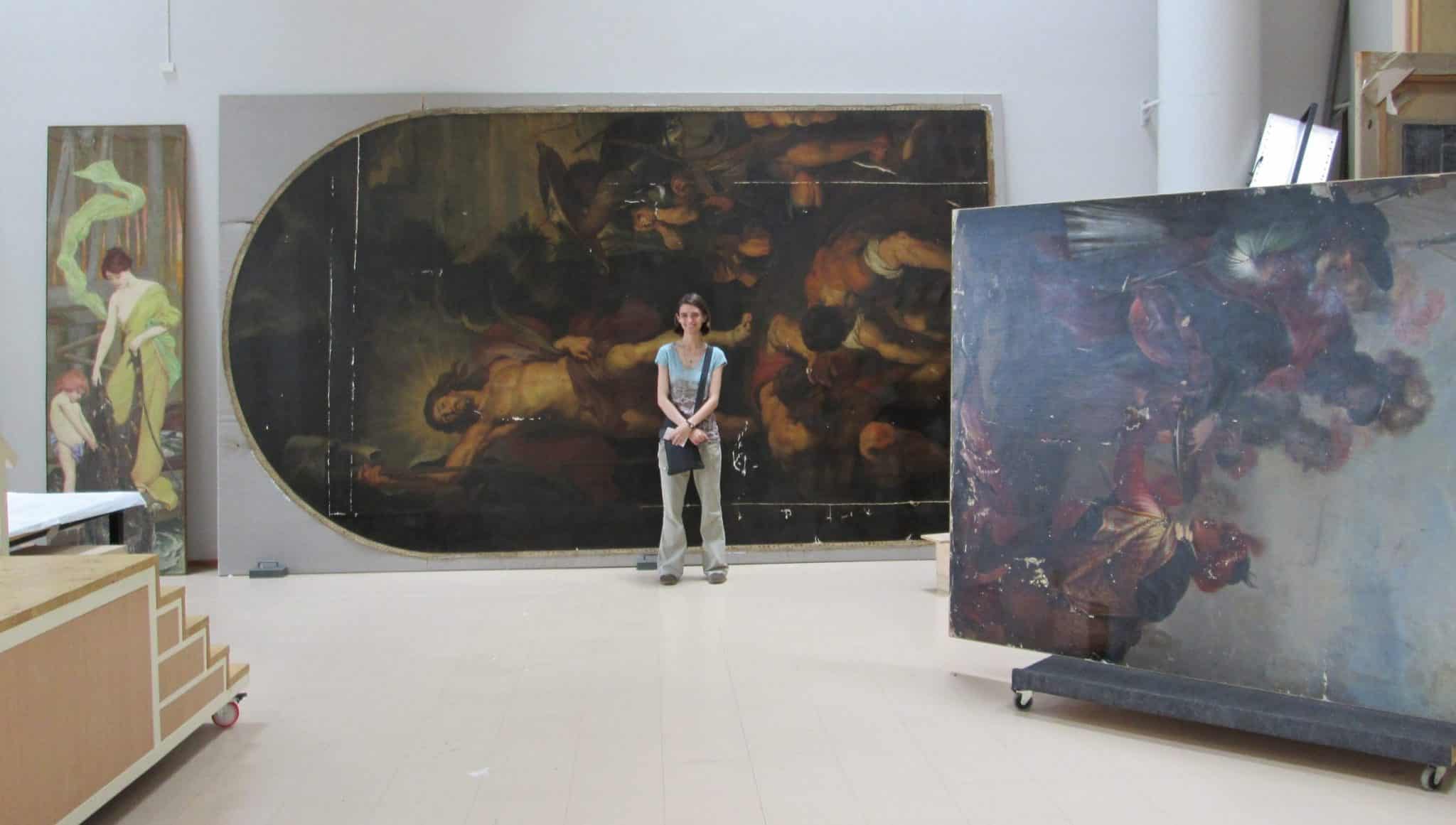
Hermitage Restoration and Storage Centre
Tucked neatly away within Staraya Derevnya just outside the centre of Petersburg sits the Restoration and Storage Centre of the State Hermitage. While it may be only a short metro ride from the bustling Nevsky Prospekt, the Hermitage Storage Building itself is quiet and spacious, entirely free of the crowds that make the main Hermitage […]
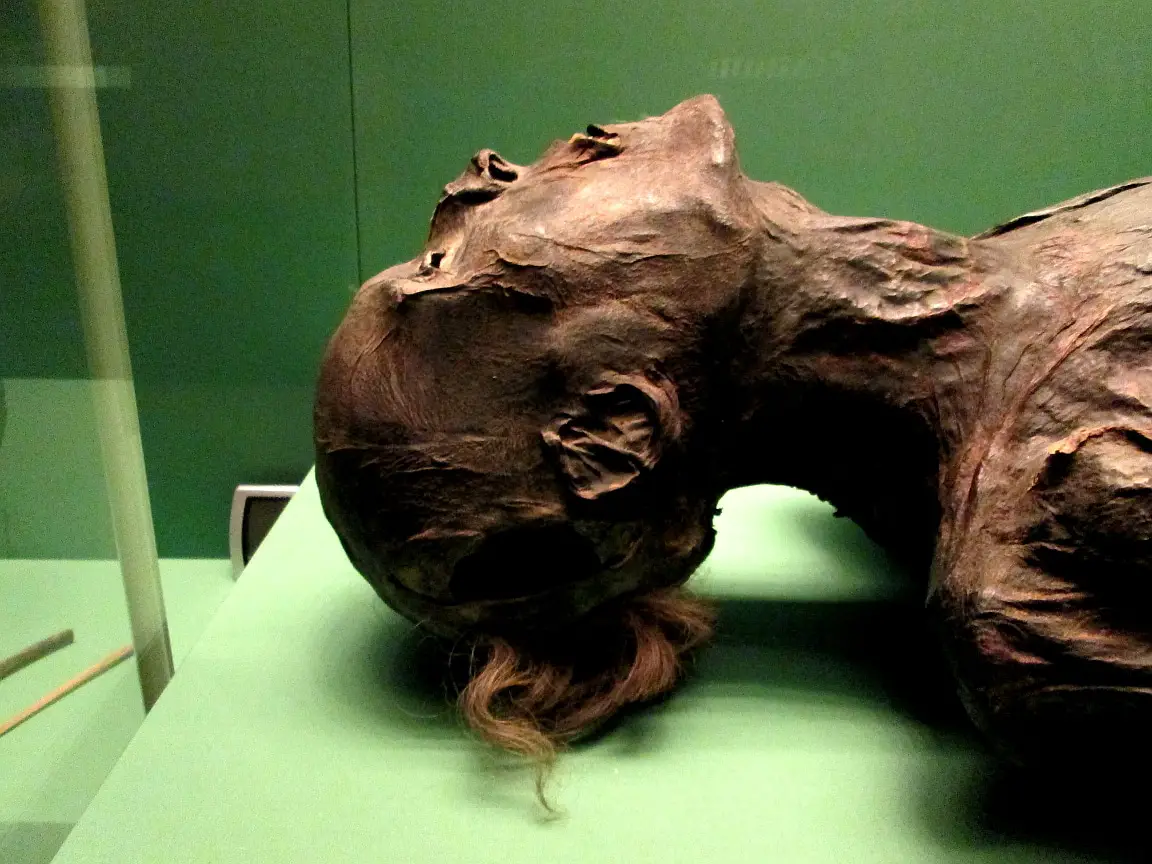
Archaeological Collections and Curation at the Hermitage
Art and Museums in Russia, a program of The School of Russian and Asian Studies, has given me some amazing opportunities in the past two weeks. The official program itself stops at nothing to expose students to as much of St. Petersburg’s art, architecture, and culture as possible. But when I asked program director Elena […]


